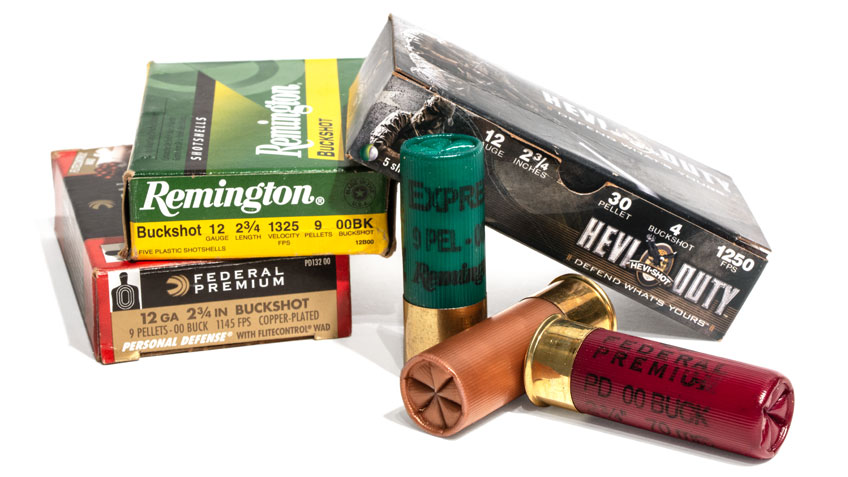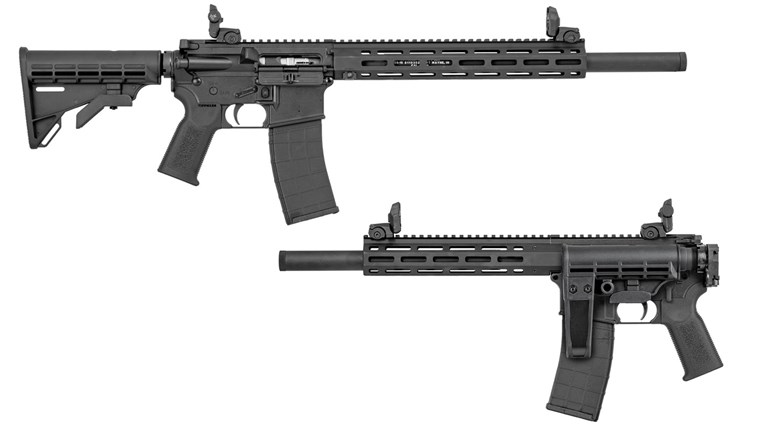
With a defensive shotgun, you need to know the maximum distance at which you might take a critical shot. Granted, a shotgun is not a precision weapon, but some loads in some shotguns will allow you to deliver exact placement of the entire payload. You also need to know the distance at which the pattern of a certain load exceeds the target zone. This is important for two reasons: First, we want to deliver the maximum effect on target. Second, we want to make sure there are no pellets straying outside the target, possibly impacting things or people you don’t want to harm.
There are a number of ways to gain this information. My method keeps it simple and can be accomplished with only one box (five rounds) of shotgun ammunition. This saves money and time, which are the two things in life we all could use more of. You should perform this test with any multi-projectile load you’re considering for personal defense.
You’ll need a single cardboard IPSC target for each load you wish to test. Place the target downrange and fire your first shot from 10 yards. This should help you establish your precision distance with that particular load. You can shoot at a closer distance if you like, but it’s been my experience that if a load/shotgun combination will not place a pattern on target that measures less than 3 inches at 10 yards, shooting at closer distances is really a waste of time. After you shoot, measure the spread of the pattern and write it on the target next to the distance. Also, take a pen and mark every hole in the pattern.
Now, back up 5 yards and shoot at the same target. Following the same procedure, measure the spread and write that measurement next to 15 yards. Mark your holes, and then repeat at 20, 25 and 30 yards. When the spread of your pattern reaches about 12 inches, you’ve reached the maximum-practical distance of that load in your shotgun. Engaging a threat at a greater distance will likely not place every pellet on target, and will allow some to bypass the threat, potentially causing collateral damage elsewhere.
What you end up with are three different zones of effectiveness. You’ll know the precision zone, which might allow you to take a head shot. You’ll also know the incapacitation-zone distance at which you can keep all of the pellets on target. Finally, you’ll know the distance at which you should switch to a slug because your pattern is too large.
I used a Mossberg 590, with an 18-inch, cylinder-bore barrel and three loads to illustrate the difference in effective range and performance. The first was 30-pellet, Hevi-Shot, Heavy Duty 2¾-inch, No. 4-buck load. At approximately 19.5 grains each, that’s a total payload of 585 grains, which equates to about 1.3 ounces of shot. At 10 yards, this load delivered a pattern of 13 inches. This means that out of the test shotgun, 10 yards is the maximum-practical range for this load, and you can forget delivering any kind of precision shot with this load-and-gun combination.
The next load was the Remington 2¾-inch, nine-pellet, 00-buck load. With each pellet weighing approximately 59.5 grains, this would equate to a payload of 535 grains or 1.2 ounces. However, much to my surprise, all the shells tested actually had 10 pellets. I know this because there were 10 holes in each target. This pushes the payload to 595 grains, almost identical to the Hevi-Shot No. 4-buck load. At 10 yards the pattern measured 5 inches; hardly adequate to allow for a precision shot. At 15 yards it opened to 9 inches and at 20 yards to 12 inches. Therefore, 20 yards is the maximum engagement range with this load out of this gun.
I saved the Federal Personal Defense load—which uses the amazing FliteControl wad—for last, because I have past experience with it. This is a true nine-pellet, 00-buck load, and at 10 yards it printed a pattern measuring only 2 inches across. At 15 yards, the pattern only opened 1 inch wider, and 20 yards it measured only 4 inches, which by the way is smaller than the Remington 00-buck load’s pattern at 10 yards. To my utter amazement, the Federal load was still printing a sub-12-inch pattern at 30 yards. At the end of the day, that is pretty awesome performance from a cylinder-bore barrel.

One of the takeaways here is that all shotshells are not created equal. The other is you need to establish the limitations of the load you are going to use, and you need to do it in the shotgun you’re going to shoot it from. Because, guess what? Contrary to some so-called scattergun scholars, not all shotguns are created equal, either. Taking the time to discover the right defensive load for your shotgun could save your life.





































